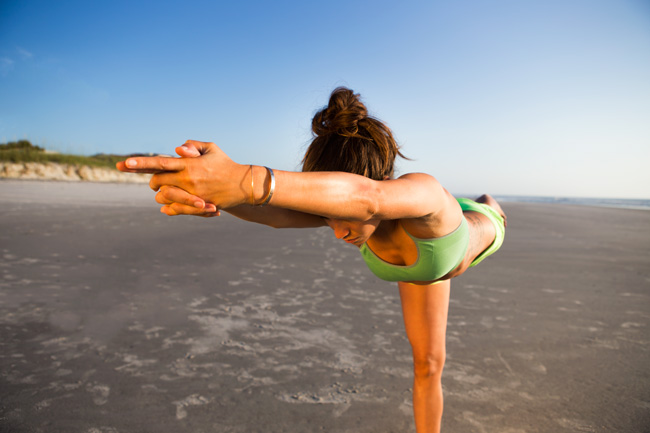When it comes to balance in yoga, a big key is the drishti.
You may have heard this word before in class, but it’s likely that you heard it while trying not to fall over, which is why we’ll be going a bit more in-depth in this post.
Drishti is the Sanskrit word for “focused gaze”. It’s when you focus intently on one spot, finding peace and strength in your physical and mental awareness.
It’s so small of a movement that people don’t ever notice it, but a person can loose a lot of energy and focus through their eyes. Imagine two people at a dinner table in a crowded restaurant. Person 1 notices everything that happens in the room–every person who walks in, the people sitting next to them, even the dance of the waiters as they look after the tables. Their eyes are constantly darting this way and that. Person 2, however, only focuses their eyes on their plate and the person in front of them. How different do you think the experience would be for each of them? Person 1 might say that it was a very busy evening–lots of movement and things going on. Person 2, however, might remember the evening as being very tranquil and relaxing. This is because of where their focused attention, or drishti, was.
Now, it’s important to note that neither Person’s perspective is good or bad. It’s simply a way to evaluate how you spend your energy and to know when to employ the drishti.
If we apply the same example to a yoga pose, you can see how employing the drishti can help to find stability and not expend energy. Let’s say Person 1 is doing tree pose on one foot. While positioning their legs, they’re aware of the colour of the mat of the person on their right, and the way the person on their left has their arms in the air, and also looking at the clock on the shelf. Then, you have Person 2 who is completely in their own world. They are listening to their breath, and their eyes have not left that one small mark at the top of their mat. Who do you think would experience more stability, balance, and sustained energy in this pose? Person 2 would, for sure.
And this is where the drishti becomes useful. We always want to incorporate play and be able to fall lightly and lovingly out of balance. But we can find ease and structure by tuning our awareness and literally focusing our eyes on one point while holding a pose.
Try it out with something familiar first. Do it with Warrior 2, or even standing completely still in Tadasana–but you’ll definitely notice a difference as you tune your balance to your drishti.



